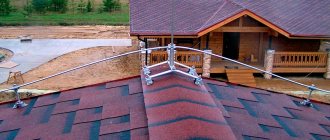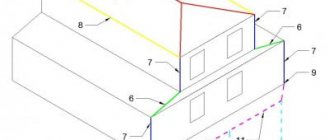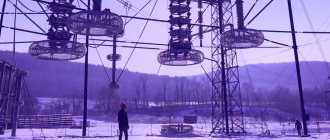Any resource, including electricity, needs transportation and redistribution. Unlike oil or coal, electricity is transmitted through power transmission lines (PTLs), which are mostly overhead lines (OHLs). These channels, due to economic feasibility, involve the transit of energy of enormous power.
To bring the characteristics of electricity into line with the parameters of the electrical networks of end consumers, as well as for its distribution, transformer substations are used.
Knowledge of the issue of lightning protection of transformer substations will help not only prevent financial damage from atmospheric electricity, but also save people’s lives.
Lightning hazard
Exceeding the operating voltage (overvoltage) as a result of a lightning strike can occur in two ways. Direct strike overvoltage (DSO) occurs when lightning directly strikes a substation. The induced one occurs as a result of an impact on the ground near the object.
Despite the short duration of the impact (about 100 microseconds), the damage can be quite significant. In addition to the fact that lightning has colossal voltage, the discharge temperature in the main channel can reach 30,000°C. Of course, the destruction of a substation or its elements can be quite significant.
Overvoltage in an installation can be caused by a lightning strike to the section of overhead line connected to it. Therefore, lightning protection of power lines also refers to a set of measures to protect substations from lightning.
In general, the following main reasons for the need to equip facilities with lightning protection devices can be identified:
- if the substation is located in a separate building, its destruction is prevented;
- protection from equipment destruction, which significantly increases its service life;
- ensuring stable power supply to consumers at the substation.
Here we can add a reduction in the level of injury to personnel. This means that lightning protection of the substation is necessary and mandatory in accordance with current legal requirements (PUE).
These rules allow only 20 and 35 kV substations equipped with transformers with a power of less than 1.6 kV not to be protected. It is also permitted not to equip substations and outdoor switchgear with lightning protection in climatic zones where the number of thunderstorm hours does not exceed 20.
Lightning protection of cable racks
The organization of lightning protection of a cable overpass depends on certain conditions - whether or not it enters the coverage area of separately located structures, power lines, lightning rods.
A lightning rod located nearby will make the installation of this system impractical, since it itself protects the overpass.
Following the requirements of the PUE, specifically clause 2.3.72 of the document, as well as the rules of SP 4.13130.2013 clause 6.5.60, overpasses must be equipped with lightning protection. Lightning protection of an overpass is carried out either by installing additional current-receiving elements - studs, following the entire length of the route, or by constructing a special metal roof with a certain metal thickness, which determines the level of protection.
Protection against PUM
Buildings, substations, including open switchgears (OSD), overhead lines and other objects are protected from lightning strikes using a lightning rod or a complex of them. The device, invented in the mid-18th century, is still relevant today.
In general, lightning rods come in cable and rod types. The first of them are used to protect extended objects, such as bus bridges, from lightning, and are used relatively rarely. The latter are the most common and are capable of providing lightning protection for buildings, overhead power line supports and other objects.
A lightning rod, as the name suggests, is a device consisting of an air terminal, a current conductor and a grounding conductor. Located significantly higher than the other structural elements of the structure, at least 3 meters (PUE), it absorbs the lightning strike.
Requirements for lightning rod
The lightning rod is made of steel. In order to withstand thermal loads when current flows, as well as the high temperature of the lightning itself, according to the PUE, its diameter must be more than 6 mm. The connection of the lightning rod to the current conductor must be made by welding them.
If this is not possible, then a threaded connection with a bolt and nut is acceptable. The diameter of the washers in this case must be increased. To avoid falling and resulting damage, the device must be firmly secured to a support or other supporting structure.
Lightning rods are usually fixed to existing metal structures. These can be floodlight masts, roofs of high-rise buildings, high points at the entrance to a substation.
The exception is transformer substations. Lightning receivers for lightning protection are not installed on them. If such a need arises, then the low-voltage windings are protected with valve arresters.
Why us?
is a team of experienced engineers and installers who know everything about lightning protection of transformer substations. We are ready to undertake the development and installation of a system of any complexity. Thus, we have already installed lightning protection for the Federation Tower in Moscow City, St. Basil's Cathedral on Red Square, and the television center of the NTV channel.
We are adopting experience from scientists from the Energy Institute named after. G.M. Krzhizhanovsky, and we purchase all equipment directly from the supplier - Dehn+Soehne (Germany). We will undertake the design, installation and maintenance of lightning protection and provide professional information support to clients.
Trust the safety of equipment and personnel. You can leave a request online or by phone +7 (495) 22 33 44 2.
Ground electrode
The down conductor is connected to the ground electrode – one of the most important parts of lightning protection. To save money, one grounding device is used as a grounding device, which meets the most stringent requirements of the following types of grounding:
lightning protection grounding;- working grounding (transformers, generators and other equipment);
- protective grounding ensuring the safety of people.
The lightning protection grounding device at substations is made of strips placed horizontally in the ground, which are connected to vertical electrodes going to the down conductor. All metal parts of the substation, including tank housings, switches, etc., must have contact with grounding. Only in this case is reliable lightning protection guaranteed.
Networks with voltages from 110 kW are made with a solidly grounded neutral, and substations of 35 kV and below are grounded through an arc suppression reactor.
All components of the lightning rod must have an anti-corrosion coating, which is usually galvanized. The number of devices on one structure, as well as their efficiency and protection zones are determined by appropriate calculations. Thus, protection of substations from direct lightning strikes is ensured using lightning rods.
Installation features
Installation of lightning protection on a private house is carried out according to a pre-designed project. During the design process you should
:
- choose the design of the lightning rod (usually a rod or cable version);
- determine the installation height of the rod element so that the house is completely protected, or choose, based on the size of the roof, the appropriate number of masts for the cable element;
- choose the location for installing the grounding loop (the distance to the walls of the house is at least 1 meter, to the entrance and paths is at least 5 meters, there should not be a children’s playground, rest area, etc. nearby);
- calculate the length of the current conductor from the lightning rod to the far end of the ground loop;
- select materials for assembling the structure.
To perform installation work, you will need to use a bayonet shovel, a welding machine, plastic fasteners for the current conductor, as well as a hammer and an electric drill along with fasteners.
At the first stage, a trench is prepared for grounding - it is a straight line three meters long or a contour in the form of a triangle. In the first case, electrodes are driven into the ground at the ends of the trench and connected with a tape, profile or rod made of the same metal by welding. In the second case, three electrodes are located at the vertices of the triangle, they are also connected by jumpers.
Ground loop in the form of a triangle
The grounding circuit must be located at a depth of 0.8 meters
It is important to install it at a level where the soil always remains moist. If the soil dries out to a great depth, it needs to be constantly moistened
Sandy soil is impregnated with a salt solution to increase electrical conductivity.
The tape or wire of the down conductor is welded at one end to the lightning rod, and at the other to the grounding conductor, and the down conductor must run along the entire length of the jumper between the electrodes and be attached to it by welding at several points. Welding areas are painted with anti-corrosion paint
.
The down conductor should not touch the walls of the house; it is secured using special elements made of non-conducting material. If the walls and roofing are made of material that is not resistant to fire, the gap between the structures and the down conductor must be at least 10 cm.
Differences in the installation technology of rod and cable installations concern only the arrangement of the lightning rod.
Installation of cable lightning rod
The lightning rod is a metal cable stretched horizontally over the ridge, where two or four metal masts (according to the size of the roof) are installed, mounted on wooden beams to prevent metal contact with the roof. The ends of the tensioned cable are attached to these masts; it should not sag. A down conductor is attached to one end of the cable by welding or bolting.
The location of the cable lightning rod above the ridge
If there is a chimney pipe on the roof, several turns of the cable should be made around it and its ends should be attached to an already mounted horizontal lightning rod.
Installation of rod lightning rod
A rod lightning rod is a metal pin 30-160 cm long. Instead of a pin, a pipe can be used, but in this case its upper end must be welded by installing a plug.
Can be used as a support for a rod lightning rod
:
- a high mast installed on the ground;
- television antenna;
- a tree whose height is comparable to or greater than the height of the house;
- frame for the roof.
Antenna as a support for lightning rod
The lightning rod is attached to the mast with bolts or welding (if the frame is metal). Then the down conductor is installed.
Upon completion of work, check the resistance of the finished lightning rod. You need to make sure that it does not exceed 10 ohms
.
Protection against induced waves
Lightning protection of a substation in the event of an indirect lightning strike is provided by special devices that provide protection against surge voltage.
Considering that it is not known in advance where lightning will strike, all inputs and outputs of the substation are equipped with either surge arresters or more advanced surge arresters (OSL).
The principle of operation of a spark gap is based on the formation of an arc between two rod electrodes, one of which is grounded and the second is connected to a phase wire.
They are separated by a protective gap. When the latter breaks down (a spark appears), the entire electrical installation is switched off, providing its lightning protection.
A tubular spark gap is considered more effective, consisting of a gas-generating tube, ring and rod electrodes and two spark gaps, internal and external.
In the event of an overvoltage, the latter break through and an arc is formed, the high temperature of which starts the gas generator. Under pressure, the gas moves to the open end of the tube, which is enough to blow out the arc.
ELECTRIC LIFTING MECHANISMS
7.4.26. The degree of protection of the electrical equipment shell used for cranes, hoists and similar mechanisms must correspond to Table. 7.4.1-7.4.3.
7.4.27.
The current supply of lifting mechanisms (cranes, hoists, etc.) in fire hazardous areas of classes P-I and P-II must be carried out using a portable flexible cable with copper conductors, rubber insulation, in a sheath that is resistant to the environment. In fire hazardous areas of classes P-IIa and P-III, the use of trolleys and trolley busbars is allowed, but they should not be located above areas where flammable substances are placed.
Table 7.4.3
Valve type arrester
An even more advanced lightning protection device against induced waves is a valve-type arrester. In addition to the gaps for sparking, it includes a sealed porcelain cover and resistors with a nonlinear current-voltage characteristic (VAC).
It is worth noting that, according to the PUE, there are restrictions on the maximum distance from the arrester to the substation transformers, ranging from 60 to 90 m, depending on the type of overhead line supports.
Arresters are used less and less to provide lightning protection for substations. More advanced devices are gradually occupying their niche. Their main advantages are the absence of spark gaps, small sizes, and deep limitation of overvoltages.
The principle of operation of the surge arrester is extremely simple. A varistor (non-linear resistor) behaves as a resistance until a threshold voltage is reached. Exceeding this value leads to the fact that the device maintains the voltage at a given level due to the branching of part of the current to the ground.
When using surge arresters as lightning protection, there are difficulties with the duration of holding the operating voltage and some others. But with the correct selection of the type of device, nonlinear lightning protection is most effective.








